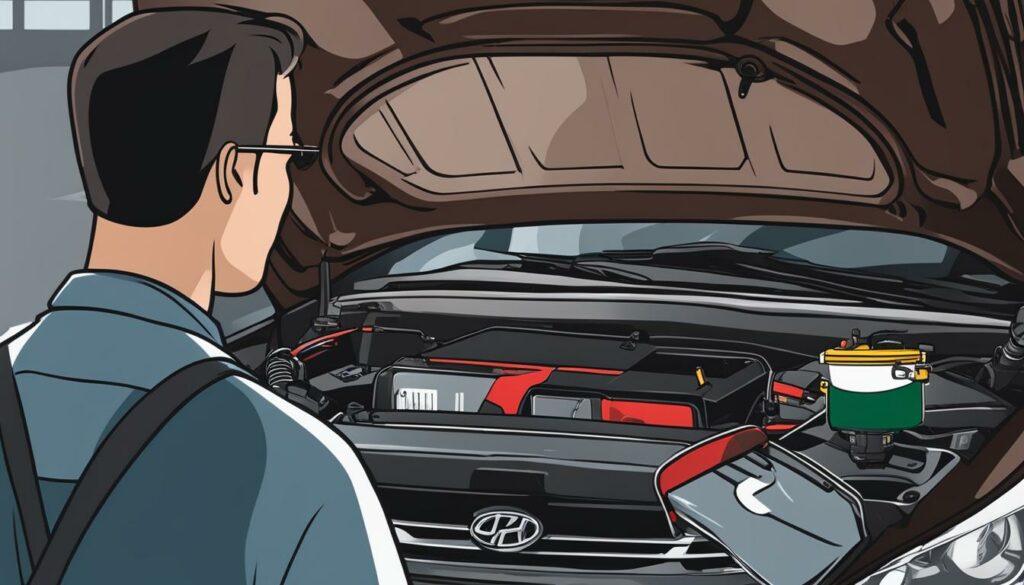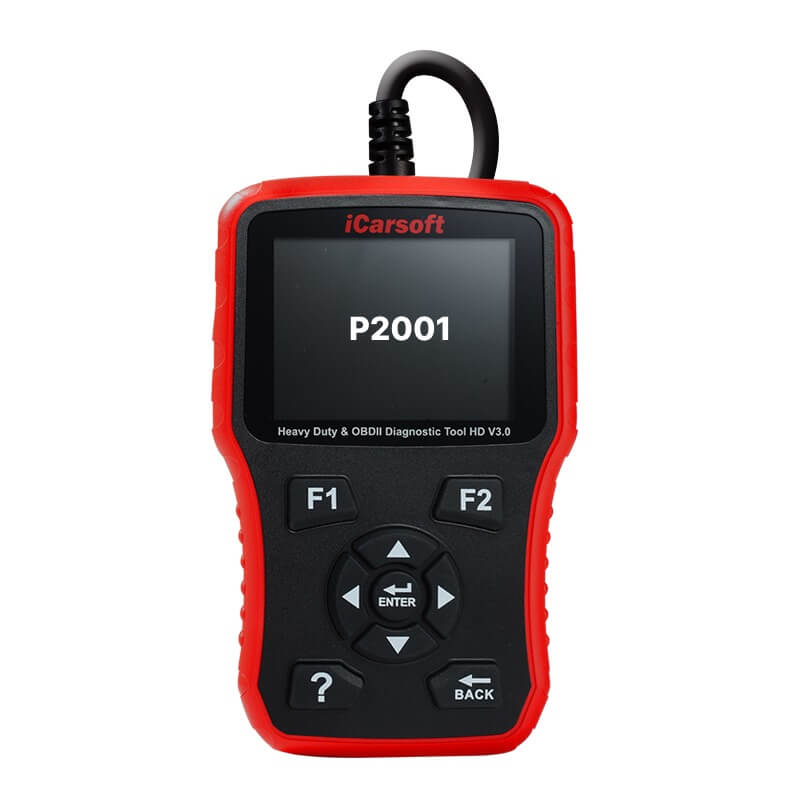P2001 – DPF Efficiency Below Threshold – Ash Accumulation
POSTED IN pcodes
The P2001 diagnostic trouble code (DTC) indicates that the diesel particulate filter (DPF) efficiency is below the threshold due to ash accumulation. This code is a signal that the DPF, responsible for filtering particulate matter from the exhaust gases of diesel vehicles, is not functioning optimally. Ash accumulation in the DPF can lead to a decrease in its efficiency, affecting the performance of the vehicle.
To address this issue, professional assistance is often required. In some cases, however, there is an alternative solution available, which involves the permanent removal of the P2001 code by uploading the Engine Control Unit (ECU) file to a portal.
Key Takeaways:
- The P2001 code indicates that the DPF efficiency is below the threshold due to ash accumulation.
- Ash accumulation in the DPF can lead to decreased vehicle performance.
- Professional assistance is often required to address the P2001 code.
- An alternative solution may involve the permanent removal of the P2001 code through ECU file uploading.
- Maintaining proper DPF maintenance is crucial for optimal vehicle performance and emissions control.
Technical Description and Meaning of P2001 Code
The P2001 code pertains to the diesel particulate filter (DPF) efficiency falling below the threshold due to ash accumulation. The DPF plays a crucial role in the diesel emissions control system, responsible for trapping and filtering particulate matter (PM) from the exhaust gases emitted by diesel engines. When ash accumulates in the DPF, it restricts the flow of exhaust gases, leading to decreased filter efficiency in trapping and removing PM. As a diagnostic tool, this code alerts technicians and vehicle owners to take corrective measures for improving DPF performance.
Symptoms and Common Causes of P2001 Code
When it comes to the P2001 code, there are several symptoms that vehicle owners should be aware of. These symptoms can serve as indications that there is an issue with the diesel particulate filter (DPF) efficiency. If you notice any of the following symptoms, it is crucial to address the problem promptly:
- Decreased engine performance: You may experience a noticeable decrease in the power and acceleration of your vehicle.
- Reduced fuel efficiency: The P2001 code can contribute to decreased fuel efficiency, resulting in more frequent visits to the gas station.
- Increased exhaust emissions: If the DPF is not functioning properly, you may observe a significant increase in the amount of smoke or emissions coming from the exhaust.
- Illumination of the check engine light: The P2001 code will trigger the check engine light, alerting you to the presence of a problem that requires attention.
Now that we have explored the symptoms, let’s dive into the common causes of the P2001 code:
Buy tested tuning file for Adblue / EGR / DPF / Adblue off now!
- Excessive ash accumulation in the DPF: One of the primary causes of the P2001 code is the build-up of ash in the DPF. This can be a result of prolonged operation without proper maintenance or insufficient regeneration cycles.
- Use of low-quality fuel: Poor quality fuel can lead to increased ash production, exacerbating the ash accumulation in the DPF and causing the P2001 code to appear.
- Malfunctioning engine control system: Issues with the engine control system, such as faulty sensors or incorrect fuel injection timing, can contribute to the accumulation of ash in the DPF and trigger the P2001 code.
- Clogged or damaged filters: A clogged or damaged filter can impede the proper functioning of the DPF, leading to ash accumulation and the activation of the P2001 code.
- Issues with the exhaust system: Leaks or other problems in the exhaust system can disrupt the flow of exhaust gases, affecting the performance of the DPF and resulting in the P2001 code.
Identifying and addressing the underlying cause of the P2001 code is essential for maintaining the performance and longevity of your vehicle. Let’s move on to the next section to explore the troubleshooting steps that can help diagnose and resolve the issue.
Troubleshooting Steps for P2001 Code
When faced with the P2001 code, there are several troubleshooting steps that can be taken to resolve the issue.
- Conduct a visual inspection of the DPF: Check for any signs of physical damage, such as cracks or leaks. This can help identify any immediate issues that may need to be addressed.
- Measure the DPF pressure drop: Use a pressure gauge to determine if the pressure drop is within the acceptable range. A high pressure drop may indicate excessive ash accumulation in the DPF.
- Attempt a forced regeneration process: If the pressure drop is too high and indicates ash accumulation, a forced regeneration process can be attempted. This process involves heating up the DPF to burn off the accumulated ash and restore its efficiency.
- Perform diagnostic tests: If the forced regeneration process does not resolve the issue, further diagnostic tests may be necessary. This can include checking the sensors related to the DPF and analyzing the exhaust gas composition to identify any underlying problems.
By following these troubleshooting steps, you can determine the cause of the P2001 code and take the appropriate measures to resolve it.
Example of a Troubleshooting Flowchart
| Troubleshooting Steps | Result |
|---|---|
| Visual inspection of DPF | No physical damage found |
| Measure DPF pressure drop | Pressure drop within acceptable range |
| Attempt forced regeneration | Ash accumulation burned off, issue resolved |
| If issue persists, perform further diagnostic tests: | |
| Check sensors | No sensor issues detected |
| Analyze exhaust gas composition | Identify underlying problem (e.g., fuel quality, engine malfunction) |

Repair Options for P2001 Code
When faced with the P2001 code, there are several repair options available, depending on the specific cause of the issue. Here are some recommended approaches:
- Cleaning the DPF: In certain cases, a simple fix may involve cleaning the diesel particulate filter (DPF) to remove the accumulated ash. This can be done using specialized cleaning solutions or through a professional cleaning service.
- Replacing the DPF: If the ash accumulation in the DPF is excessive and cannot be resolved through cleaning or regeneration processes, it may be necessary to replace the filter entirely. When replacing the DPF, it is crucial to use a high-quality, OEM or equivalent part to ensure proper fit and function.
- Addressing underlying issues: To prevent the recurrence of the P2001 code, it is essential to identify and address any underlying issues that may have contributed to the ash accumulation. This may involve diagnosing and repairing faulty sensors or resolving engine control system malfunctions.
To determine the most appropriate repair option for your vehicle, it is recommended to consult with a qualified technician or mechanic who can provide expert advice based on the specific circumstances.

Comparison of Repair Options
| Repair Option | Pros | Cons |
|---|---|---|
| Cleaning the DPF | – Cost-effective option – Can prolong the life of the existing DPF |
– May not be effective for excessive ash accumulation – Cleaning process may require professional assistance |
| Replacing the DPF | – Ensures optimal DPF performance – Provides a long-term solution |
– Can be expensive – Requires the installation of a high-quality replacement part |
| Addressing underlying issues | – Prevents future occurrences of the P2001 code – Improves overall vehicle performance |
– Requires additional diagnostic work – May involve more extensive repairs |
Conclusion
In conclusion, the P2001 code indicating DPF efficiency below the threshold due to ash accumulation is a common issue in diesel vehicles. Addressing this issue promptly is crucial to prevent further damage to the DPF and maintain optimal vehicle performance. It is highly recommended to seek professional assistance to accurately diagnose and repair the underlying cause of the code.
In some cases, an alternative solution may be available, which involves the permanent removal of the P2001 code by uploading the Engine Control Unit (ECU) file to a portal. However, it is important to note that this solution should only be considered after consulting with experts in the field.
By effectively addressing the P2001 code and ensuring proper maintenance of the DPF, diesel vehicle owners can maintain the efficiency and longevity of their emissions control system. Regular DPF cleaning or replacement, as well as addressing any underlying issues contributing to ash accumulation, can significantly improve DPF performance and prevent the recurrence of the P2001 code in the future.
FAQ
What does the P2001 code indicate?
The P2001 code indicates that the diesel particulate filter (DPF) efficiency is below the threshold due to ash accumulation.
What is the diesel particulate filter (DPF)?
The DPF is a component of the diesel emissions control system that traps and filters particulate matter (PM) from the exhaust gases of diesel engines.
What are the symptoms of the P2001 code?
Symptoms can include decreased engine performance, reduced fuel efficiency, increased exhaust emissions, and the illumination of the check engine light.
What are the common causes of the P2001 code?
Common causes include excessive ash accumulation in the DPF, long-term operation without proper maintenance, use of low-quality fuel, and malfunctioning engine control system.
What are the troubleshooting steps for the P2001 code?
Troubleshooting steps include visual inspection of the DPF, measuring the pressure drop, attempting forced regeneration, and conducting further diagnostic tests if needed.
What repair options are available for the P2001 code?
Repair options may include cleaning or replacing the DPF, addressing underlying issues like faulty sensors or engine control system malfunctions, or replacing the DPF with a high-quality part if necessary.
How can the P2001 code be permanently removed?
An alternative solution may involve uploading the Engine Control Unit (ECU) file to a portal for permanent removal of the P2001 code. Professional assistance is recommended for this process.


